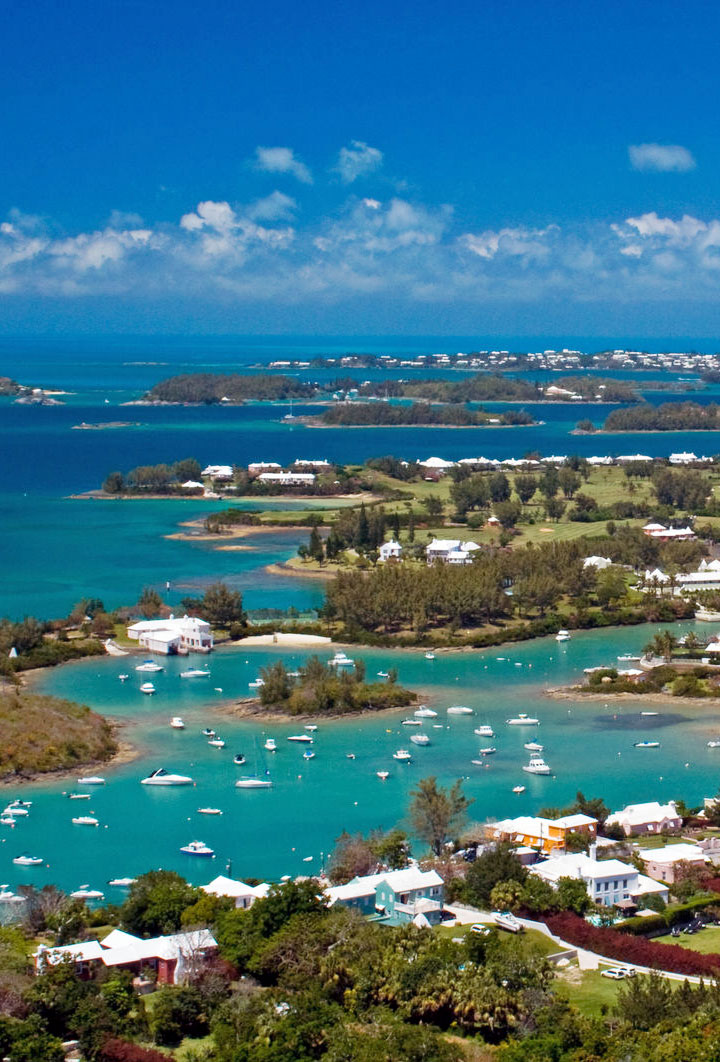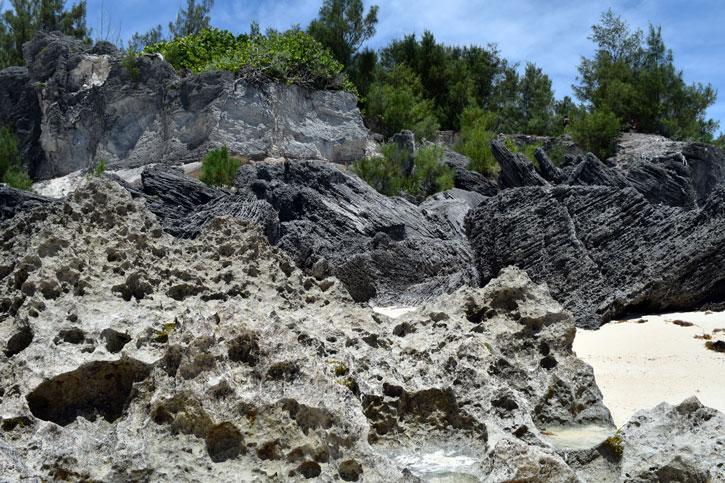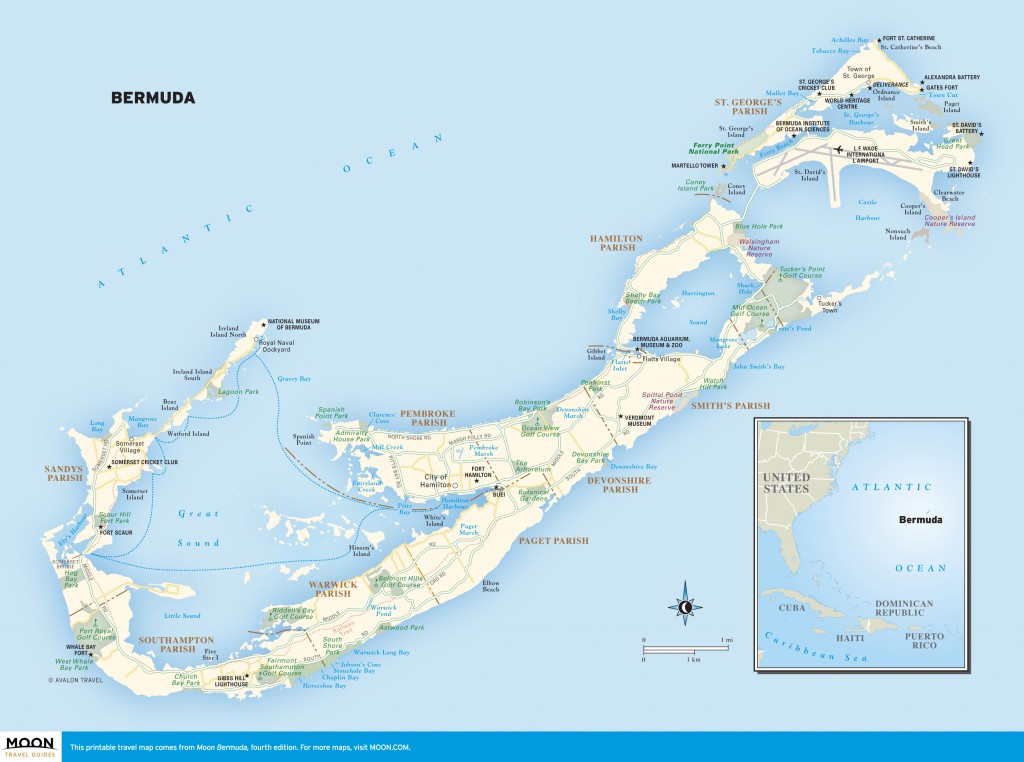
Looking across the Great Sound, Bermuda. Photo © Gary Parker/123rf.
The main island is relatively small at 21 square miles (22 miles end to end, and never more than two miles wide), with the hook’s western third curling around to the northwest. But due to its varied and hilly—though not mountainous—terrain, Bermuda from the ground is rather deceptive, leading one to believe that, just around the next corner, there might be more than the sum of its compressed vital statistics. An aerial view is more revealing: As you descend for a landing at the East End airport, sweeping from violet deep-ocean across reef-dotted aquamarine shallows, the island appears almost fragile in its entirety—an oceanic oddity whose geographic isolation has shaped a distinct survival.
Bermuda’s unique, seemingly contradictory characteristics have long intrigued scientists. A subtropical island about 650 miles from the nearest mainland (Cape Hatteras, North Carolina), it bears little resemblance to its Caribbean cousins in climate, biota, or geology. Instead, Bermuda is bathed by the balmy Gulf Stream, which exerts a moderating influence on its climate, just as the easterly trade winds do down south. Yet, unlike the tropical Indies, Bermuda’s winters are damp and storm-wracked. There is no typical wet or dry season; indeed, the island’s weather habits are so capricious that a thunderstorm can let loose on one parish while sparing all the others.
Geologically, the island’s core is soft, white limestone, despite violent volcanic origins. There are no rivers, lakes, or streams. The topography is neither towering nor dangerously low (Town Hill in Smith’s Parish is the highest point of land at 259 feet above sea level). And though tiny, Bermuda’s landmass holds an astonishingly diverse range of natural habitats—from marshland to sand dunes and cedar woodland—that support an equally varied ecology.

Geologically, Bermuda’s core is soft, white limestone, despite violent volcanic origins. Photo © Rosemary Jones.
Visitors, of course, are tantalized by such offerings. Bermuda’s geologic permutations have left a place characterized by mostly welcoming temperatures; by floral eye candy found throughout the island’s undulating length; by soft, rosy-hued beaches and turquoise swimming holes; by saltwater sounds that provide perfect natural harbors; by pastel homes hewn from the very rock they sit on; and by a necklace of biodiverse coral reefs—the most northerly in the world.
Except for the ferocity of its storms, including seasonal hurricanes, Bermuda’s environment is indeed charmed. Immune to natural disasters such as earthquakes, volcanoes, mudslides, or floods, devoid even of dangerous plants or animals, its appearance conjures a manicured country garden rather than a mid-Atlantic atoll.

Bermuda
Excerpted from the Fourth Edition of Moon Bermuda.